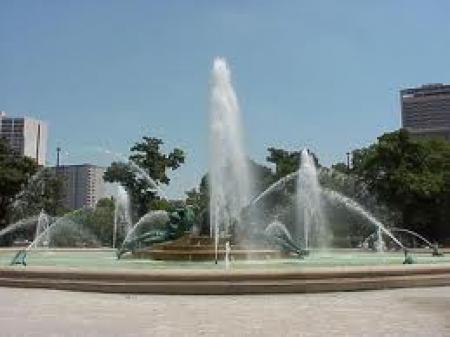Serendip is an independent site partnering with faculty at multiple colleges and universities around the world. Happy exploring!
Segways, Libraries, and Diversity

During the second day of class, the word I chose to describe Mumford’s piece “What is a City?” was “improbable.” Although I liked the concept of a “civic nuclei” (96), in which “social disharmony and conflict [could create] drama” (94), I did not think that such a place could exist. I was aware that many cities have the diversity that allows for “social disharmony.” Yet, I considered it unlikely that people of different ethnicities encounter each other often enough to create it. Instead, I believed that most cities are split into various cultural and/or ethnic neighborhoods, that people are mainly drawn to places that they can personally identify with, and, in consequence, that a whole city could be diverse, but it was not necessarily a melting pot.
However, all of these beliefs were altered during my first trip to Philadelphia. Now, I do not doubt the actuality of “civic-nuclei.” Instead, I believe that they can exist and, when they do, they are integral parts of a city.
One of the experiences that led me to change my beliefs occurred soon after we arrived. Once we separated from the rest of the students, my group began to walk to the Philadelphia Museum of Art. On the way there, we took several unintentional detours; we accidentally wandered over to Whole Foods instead of the museum, and we were happily distracted by casts of Rodin’s sculptures. Thanks to these detours, we were just in time to run into a group of segways coming from the direction we were headed. We chuckled as they passed us. The whole group was an interesting sight to see. The tour guide had a large blue sign glued to his segway that made it look like the modern equivalent of a chariot. Furthermore, the tourists that rode behind him were obviously embarrassed. Instead of concentrating on the scenery that the tour guide was describing to them, they kept their eyes downcast so as to avoid making eye contact with anyone who walked by. Although we were also tourists, no one looked at us and considered that we, too, were not city-dwellers.
We passed many other people as we walked to the museum. People sat on park benches with thermoses in their hands, they jogged quickly passed us, and met friends for coffee at cafes nearby. Often, I would try to slyly eavesdrop on their conversations. However, many of my pursuits were fruitless; a large portion of the people I overheard spoke languages that I did not understand. This observance both surprised and fascinated me. Soon, I realized that a diverse group of people surrounded me. There was no norm for how they dressed, looked, or what language they spoke. The only identifiable feature that made a tourist distinct from a city-dweller was, in fact, a segway. Mumford’s essay suddenly seemed more applicable than it did before. I began to agree that diversity can be widespread in a city.
Still, I was confused. Logan Square is beautiful and bustling with cars, but why would so many people spend their spare time in it. While waiting for the “Quiet Volume Performance” to start, I began to answer my own question. For just five minutes, I people-watched and observed interactions around me. First, I looked inside the library. A bright red and blue tennis uniform caught my eye. On the library’s stairwell, a girl posed for a camera. Her hair was teased and full of hairspray, creating a three-inch tall bump, and her entire face was covered with make-up. After glancing at her, I turned to look back outside the library. The people walking up the steps shared no similarities with her. They neither wore bright red and blue tennis uniforms nor appeared to be from the same cultural or economic background. A woman walking up the steps held a bright purple ballon and wore a hijab. Behind her, a man wearing a kippa was carrying a heavy book. I looked beyond the steps, to the park on the other side of the road. A homeless man was lying on a piece of cardboard. I watched him stand up, dust if off, and begin to cross the street. Once there were no cars, he proceeded to walk up the steps and into the library. As I walked into the library, I began to understand that a “civic-nuclei,” a place like Logan Square, is not just popular for its central location; there are libraries and buildings near it that many people want access to. Throughout the following trips to Philadelphia, I hope to discover more reasons for why people congregate around Logan Square and other “civic-nuclei” like it.
Photo credit: http://philadelphia.about.com/library/gallery/blparkway32.htm



